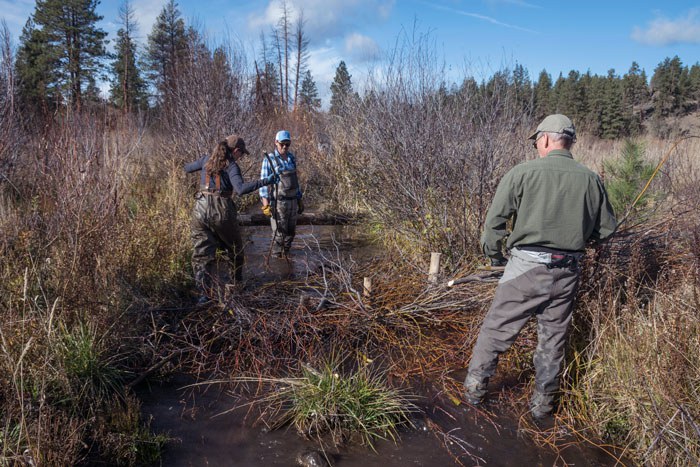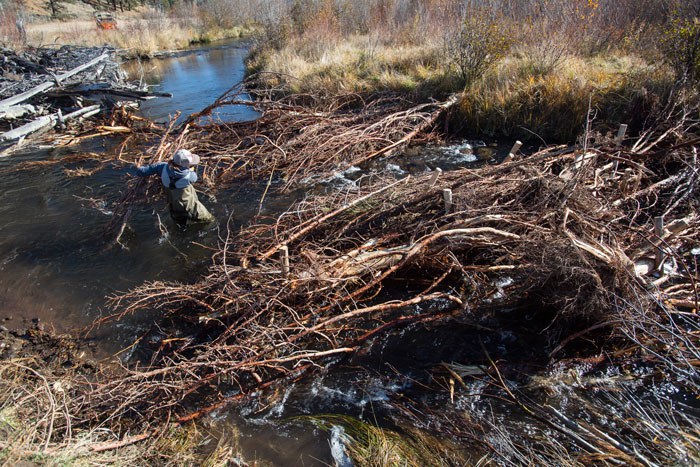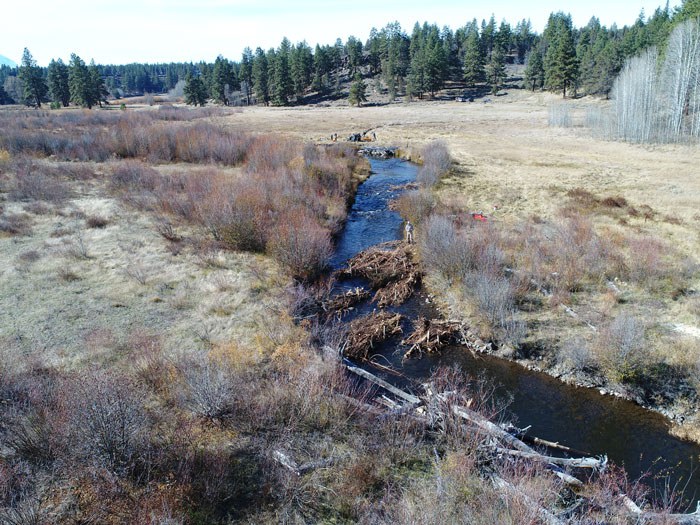The Land Trust recently had a crew of restoration partners and volunteers out at Camp Polk Meadow Preserve helping with a stream restoration technique that pays homage to nature's master engineer: the beaver!
Beavers play an important ecological role in our streams and rivers. Their ponds help slow water flow, improve water quality, and create new side channels. As part of the planning for stream restoration at Willow Springs Preserve, the Land Trust and our partners felt it was time to try beaver engineering as a low-tech model for how we might restore the creek. Our first step: pilot a beaver-inspired restoration project at Camp Polk Meadow Preserve.
Volunteers and restoration staff gathered in the lower portion of Camp Polk Meadow to mimic beavers by building several different dam-like structures in Whychus Creek. On smaller side channels of the creek, crews built seven mini-dams out of woven willow and alder, along with rocks and mud (see photo below). Some of these dams were held in place with vertical wooden posts. Once the dams were in place, water began to back up, creating ponds and pouring into other side channels.
On the large main channel of Whychus Creek, we built three more structures that look like log jams. For these, entire juniper trees were anchored by wooden posts to one bank and then placed out into the center of the channel (see photo below). These structures don't span the channel and back up water, but will instead help redirect water during high flows to create more diverse habitat for fish. 
While the structures themselves were different, both approaches are designed to improve habitat diversity in Whychus Creek without intense earth moving efforts. The mini-dams will create slow-water ponds and fill dry side channels, offering different kinds of habitat for fish and wildlife. The larger log jams will create more meanders and gravel bars. As an added bonus: the mini-dams also encourage the beavers themselves to use the human-created ponds by offering the deep water they need for predator avoidance, food storage, and den entrance tunnels. In time, the maintenance of these mini-dams may be taken over by the beavers!
We look forward to watching this small restoration project grow and change over time. Our hope is that these structures will help jumpstart some of the natural stream processes that will, in turn, build the healthy habitat fish and wildlife will need into the future. These structures are not intended to be permanent and instead will change and evolve as those natural processes take over. What we learn at Camp Polk Meadow Preserve will help with the design of the larger restoration effort at nearby Willow Springs Preserve. Stay tuned!
Learn more:


